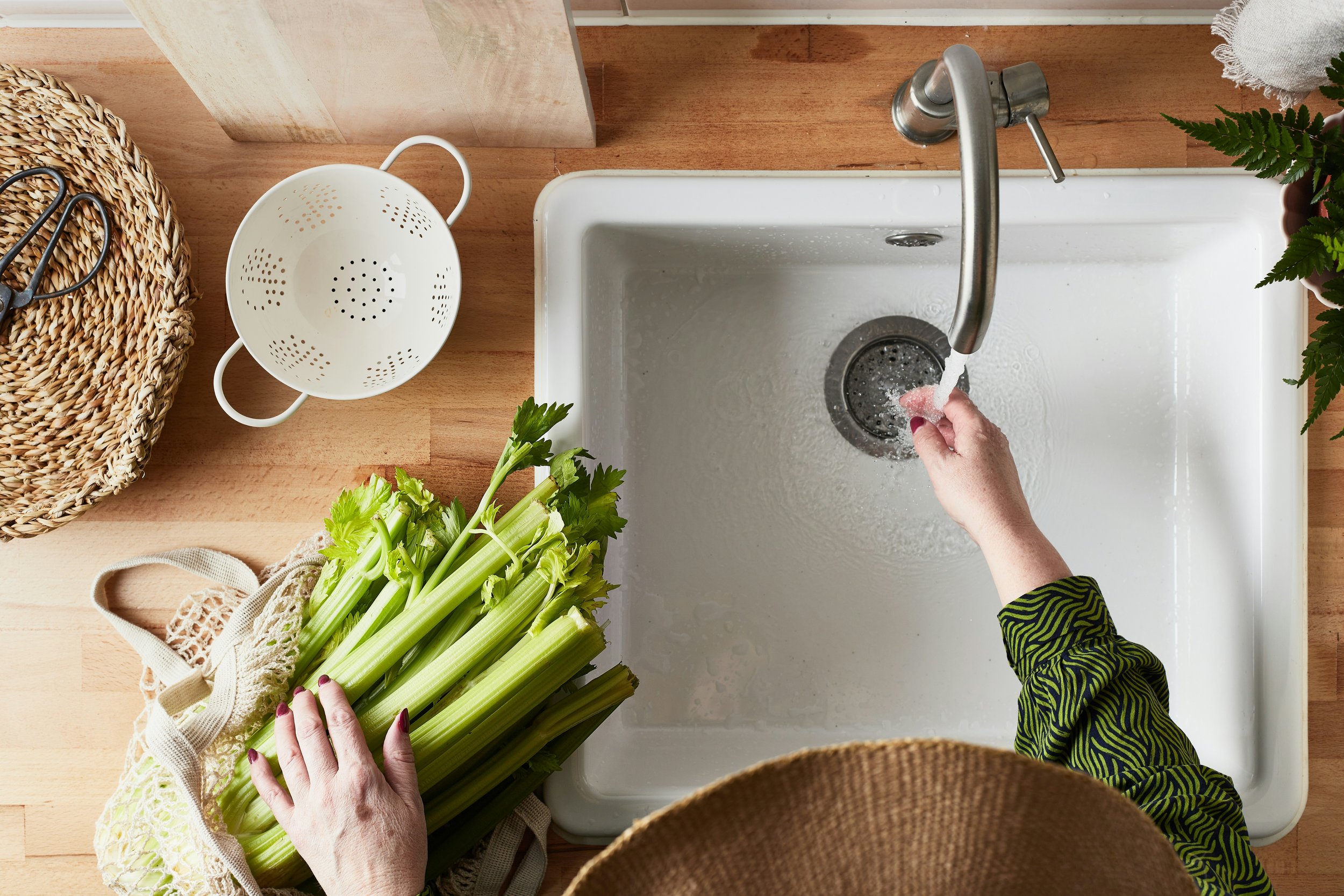How to Install a Kitchen Sink Drain: Step-by-Step Guide
Learn how to install a kitchen sink drain with our comprehensive step-by-step guide. Discover essential tools, tips, and techniques for a successful DIY plumbing project that will enhance your kitchen.
Ready to tackle a kitchen project that’s both practical and satisfying? Installing a kitchen sink drain might seem daunting, but with the right guidance, you can do it yourself! Whether you're upgrading your kitchen or replacing a worn-out drain, understanding how to properly install a kitchen sink drain is crucial.
In this How to Install a Kitchen Sink Drain: Step-by-Step Guide, we’ll walk you through everything you need to know—from the tools and materials required to the installation process itself. With a little bit of patience and a willingness to get your hands dirty, you’ll be enjoying your new sink in no time. So, roll up your sleeves, and let’s dive in!
Tools and Materials You'll Need
Before you start, it’s essential to gather all the tools and materials you’ll need for this project. Here’s a handy list to get you prepared:
Tools:
Adjustable wrench: For tightening and loosening nuts and fittings.
Plumber’s putty: To create a watertight seal.
Screwdriver: A flathead or Phillips screwdriver, depending on your fittings.
Pipe cutter or hacksaw: If you need to cut pipes to size.
Measuring tape: For accurate measurements.
Bucket: To catch any excess water during the process.
Safety gloves: To keep your hands protected.
Materials:
Sink drain assembly: This typically includes the drain body, strainer, and nut.
PVC or metal pipes: Depending on your existing plumbing, you’ll need appropriate drain pipes.
Washers and nuts: Make sure you have the right size for your sink and drain assembly.
Step-by-Step Instructions
Now that you have everything you need, let’s get down to business! Follow these steps for a successful kitchen sink drain installation.
Step 1: Prepare the Area
1. Clear the Space
Remove Any Obstructions: Before you begin, remove any obstructions by clearing out items from under the sink. This will provide you with ample room to work and prevent any clutter from getting in the way. A clean, organized space not only makes the task easier but also helps you avoid potential messes, allowing for a more efficient and hassle-free experience.
2. Turn Off the Water Supply
Shut Off the Valves: Locate the water supply valves under the sink and turn them off to prevent any leaks or spills during your work. If you're unsure which valves to shut off, trace the supply lines back to the main shutoff valve. Ensuring the water supply is turned off is a crucial step to avoid potential water damage while you make your repairs.
3. Place a Bucket Under the Sink
Catch Any Water: Position a bucket or basin under the sink to catch any water that may spill during the installation process. This precautionary measure will help contain any leaks or drips, preventing water from damaging your cabinetry or flooring. Having a receptacle in place ensures a cleaner, more efficient workspace while you work on your plumbing tasks.
Step 2: Remove the Old Drain
1. Disconnect the Drain Pipes
Loosen Nuts: Using your adjustable wrench, carefully loosen the nuts connecting the drain pipes to the sink drain assembly. Once loosened, remove the pipes gently, being mindful of any residual water that may spill out. It’s essential to handle this step with care to avoid creating a mess and to ensure that the connections are properly managed during reinstallation.
2. Remove the Old Drain Assembly
Take Out the Old Drain: To remove the old drain assembly, check if it’s secured with a nut or gasket and use your wrench or screwdriver to loosen it. Once the assembly is loose, you should be able to lift it out of the sink easily. Take care during this process to avoid damaging the sink or surrounding components.
Step 3: Clean the Sink Surface
1. Inspect for Damage
Check for Residue: Before installing the new drain, check the sink surface to ensure it is clean and free of old putty, debris, or residue. A clean surface is crucial for achieving a proper seal, which helps prevent leaks. Taking the time to thoroughly clean the area will ensure that your new drain fits securely and functions effectively.
2. Wipe Down the Area
Use a Cleaner: Use a mild cleaner to wipe the area thoroughly, ensuring it is pristine before installing the new drain. This step is important, as a clean surface allows the new drain to fit snugly and helps prevent leaks. Taking the time to clean will improve the overall effectiveness and longevity of your installation.
Step 4: Install the New Drain Assembly
1. Apply Plumber’s Putty
Create a Seal: To create a seal, take a generous amount of plumber’s putty and roll it into a rope-like shape. Place this rope around the underside of the drain flange before installation. This technique ensures a watertight seal when you install the drain, preventing leaks and enhancing the overall effectiveness of your plumbing setup.
2. Insert the New Drain
Position the Drain: Position the drain assembly by pushing it up through the hole in the sink. As you do this, ensure that the plumber's putty compresses evenly around the edges of the flange. This even compression is crucial for forming a tight seal, which will help prevent leaks and ensure the drain is securely in place for optimal performance.
3. Secure with Washer and Nut
Add the Washer: From underneath the sink, place the rubber washer onto the threaded part of the drain. This washer acts as a cushioning barrier to enhance the seal. Next, follow it with a metal nut, tightening it securely to hold the drain assembly in place. Ensure everything is snug, as this will help prevent leaks and maintain the integrity of your plumbing.
Tighten the Nut: Use your wrench to tighten the nut snugly, ensuring a secure fit without overtightening. Be cautious, as excessive force can crack the sink or damage the drain assembly. Aim for a firm connection that holds everything in place while still allowing for a bit of flexibility, which helps maintain the integrity of the installation.
Step 5: Connect the Drain Pipes
1. Attach the P-Trap
Position the P-Trap: Position the P-trap by connecting it to the drain assembly, ensuring that it fits securely. The curved shape of the P-trap is essential, as it acts as a barrier that prevents sewer gases from entering your home. Make sure the connections are tight to avoid leaks, and ensure that the trap is properly aligned for optimal function.
2. Connect Additional Pipes
Use PVC or Metal Pipes: Depending on your setup, attach any additional pipes needed to complete the drain line. Ensure each joint is secure, using a wrench to tighten nuts as needed.
Step 6: Check for Leaks
1. Turn on the Water Supply
Open the Valves: Once you’ve ensured everything is secure, gradually turn the water supply back on. As the water flows, carefully check for any leaks around the drain assembly and pipe connections. This step is crucial for identifying potential issues early, allowing you to make any necessary adjustments or repairs to prevent water damage in your home.
2. Inspect for Issues
Look for Drips: If you notice any leaks, you may need to tighten the nuts or adjust the positioning of the pipes. If leaks persist, you might need to disassemble and reapply plumber's putty.
Step 7: Final Touches
1. Clean Up
Wipe Down Surfaces: After completing the installation, wipe down any excess putty and debris around the sink. Cleaning the area not only helps maintain a neat appearance but also prevents dirt and grime from accumulating over time. A tidy workspace enhances the overall look of your sink area and ensures that your plumbing installation looks professional and well-finished.
2. Test the Drain
Run Water: Run the faucet for a few minutes to ensure that water drains properly through the new assembly. As the water flows, keep an eye out for any leaks around the drain and pipe connections. This final check is essential to confirm that your installation is secure and functioning correctly, providing peace of mind that everything is in order.
Conclusion
Congratulations! You’ve successfully navigated the process of installing a kitchen sink drain with our How to Install a Kitchen Sink Drain: Step-by-Step Guide. With a little patience and some handy tools, you’ve transformed a potentially messy task into a manageable DIY project.
By following the steps outlined above, you’ve not only saved yourself some cash but also gained a valuable skill. So, the next time someone asks you about your plumbing prowess, you can confidently say, “I installed that kitchen sink drain myself!” Now, go ahead and enjoy your beautifully functioning sink—happy plumbing!
Frequently Asked Questions
1. How long does it take to install a kitchen sink drain?
The installation process typically takes about 1-2 hours, depending on your experience and the complexity of your plumbing.
2. What if my sink is leaking after installation?
If you notice leaks, double-check all your connections and tighten any loose nuts. If the leak persists, you might need to remove and reapply plumber's putty.
3. Can I install a kitchen sink drain on my own?
Absolutely! With the right tools and guidance, many homeowners successfully complete this project themselves.
4. What type of drain assembly should I use?
Choose a drain assembly that fits your sink type and plumbing requirements. Standard kitchen sink drain assemblies are widely available at home improvement stores.
5. Do I need a professional for this installation?
While many DIY enthusiasts can handle this task, if you're uncomfortable with plumbing or encounter complex issues, it’s best to consult a professional.




